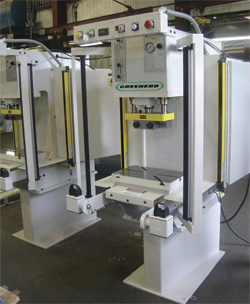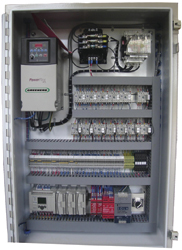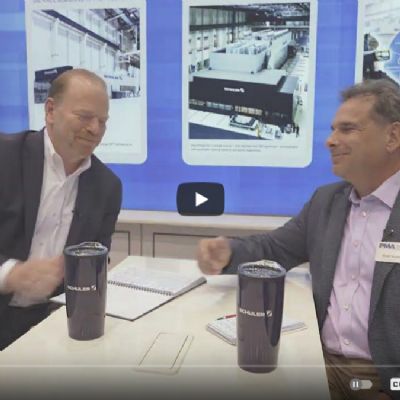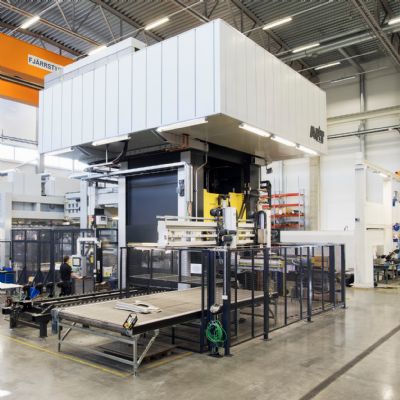The Benefits are Numerous
With a VFD on a hydraulic press, energy-cost savings by only running the motor when it’s needed can accumulate quickly (see the sidebar). More energy savings can be realized by programming the VFD to ramp the motor up to speed (more than 3 to 5 sec. typically), which eliminates the large electrical inrush of current. This can allow a metalformer to minimize its surge (or demand) amperage. Also, the ability to control the speed of the motor enables the motor to run at slower speeds while idle to filter and cool the oil, charge accumulators, or satisfy other small-hp demand requirements.
“With a VFD, the motor can communicate through Ethernet (or with discrete inputs/outputs) to a PLC,” adds Bisbee, “allowing touchscreen (and potentially recipe) control of motor on/off timing, idle speeds and fault indications. Also, the VFD will generate its own AC voltage to drive the motor. This naturally isolates the motor from most voltage fluctuations or spikes, prolonging its life.”
A Poor-Man’s Transformer
Bisbee shared a recent customer success story where a VFD installed on a press destined for an offshore company acted as what he calls a “poor-man’s transformer.”
“The customer needed to run a press on 415 VAC at 50 Hz, and the motor was rated at 460 VAC, 60 Hz ,” he notes. “A VFD installed on the motor allows the factory to run 415 V into the press and put out 460 V on the other side, avoiding the big investment needed for a transformer.”
In another recent case, a military-equipment supplier purchased a large hydraulic press with a 150-hp motor and calculated its ROI for a VFD at 18 months. “Cycle rates were low, and the company operates in a high-energy-cost area of the country,” says Bisbee.
Where won’t a VFD make sense? “In applications where the runs are 15 cycles/min. or greater, it can be hard to justify the cost of a VFD, which can range from two to 10 percent of the overall price of the press (the larger the press, the lower the option cost as a percentage), because there is relatively little press idle time,” Bisbee says. “Conversely, on presses running under 15 cycles/min., we begin to see opportunities to take advantage of the electricity savings.”
Why Not Something Else?
“Some say, ‘Why not use a contactor (or large relay) to turn the motor on and off?’” Bisbee notes. The reason: “While there can be some cost savings because the motor will be turned off while the press is idle, the contactor will not help reduce the inrush currents created by the motor switching on. This can be a very large part of overall energy costs.
“Others say, ‘Why not use a motor soft-start device?’” he continues. Reason: “While a motor soft-start device can be less expensive then a VFD and it can help to eliminate inrush currents when the motor turns on and off, the device cannot control motor speed. During idle time, it’s important to be able to keep the oil flowing through the chiller. If the oil gets too hot (above 150 F), the metalformer will begin to experience premature degradation of the hydraulic-system components. The first to go usually is the pump—the seals and gaskets won’t last. Also, a soft-start device cannot communicate intelligently with a PLC to provide fault indications, etc.” MF
View Glossary of Metalforming Terms
See also: Greenerd Press & Machine Co.
Technologies: Stamping Presses











 Video
Video
